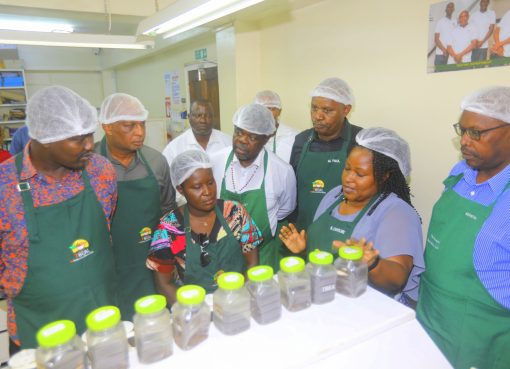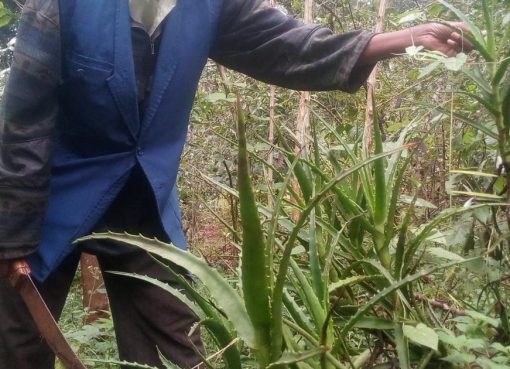The United Nations Educational, Scientific and Cultural Organization (UNESCO) has underscored the importance of creating incubators and accelerators in Technical Vocational Educational Training Institutions (TVETS) that will assist in production of creative content that is globally competitive.
UNESCO pointed out the importance of integrating art spaces and creative courses within TVET institutions to nurture talent effectively.
Speaking at a two-day capacity-building workshop on creative content creation at Nakuru Players Theatre, the Deputy Director of Cultural expressions and creativity culture at the Kenya National Commission for UNESCO Ms. Emily Njeru further highlighted UNESCO’s willingness to share best practices in policy formulation, which Governor Susan Kihika’s administration, could adopt to support the sector further.
Ms. Njeru noted that the potential of many creative artists remains unexploited, yet they provide great opportunities for wealth creation across different age groups.
“We must move a step further – train our young people how to monetize their creative content- and help citizens unlock their hidden wealth,” stated the Deputy Director.
Ms. Njeru said that the education system needs to continue bolstering a system that develops and nurtures creative talent in learners.
Apart from providing a medium through which Africans can preserve their folklore and heritage, the Deputy Director noted that creative arts have a tremendous potential of enabling individuals to develop innovativeness needed in a knowledge driven economy that Kenya is gearing towards.
She noted that the creativity in poetry, music, dance and art is a source of wealth that Kenyan youth should explore to create abundant opportunities for the bulging population, adding that we need to change our mindset and establish more learning institutions for creative content development.
In Kenya some of the colleges involved in the creative content space include Kenyatta University School of Creative Arts and Film Technology, Africa Creative Arts and Innovation College, Kenya Institute of Mass Communication (KIMC), Africa Digital Media Institute, Kabarak University, Daystar University and Hekima University College.
Experts have noted that there are other unexplored areas like virtualizing African Art, storytelling (recreating Africa’s oral literature) and illustrations for developing other online content like children’s books, graphic designers and many more.
Ms. Njeru observed that there is existence of abundant creative talent among learners at all levels of learning and the education system should tap it for posterity.
The Deputy Director suggested that parents and educators need to work more on thinking about arts in schools as not just imparting skills and cultivating talent, but rather as giving every learner in all learning institutions a way of engaging with knowledge through the aesthetic and creative potential inherent in every individual.
The workshop brought together key stakeholders, including the Nakuru Players Theatre leadership and organizations like the Swahili Cultural Institute, Uruman, Black Coffee Network, and Frankmon Venture Limited.
Nakuru County Culture Officer Mr Erick Muriuki acknowledged the untapped potential of youth in the creative sector. He noted that targeted training and capacity building could enable creatives to enhance their craft and competitiveness.
He pledged that Governor Kihika’s administration was continually investing in theatre and art as an avenue to create jobs for the youth.
The devolved unit has also pledged that it will continue providing opportunities to nurture Kenya’s rich, diverse and vibrant creative talents.
Mr Muriuki said the introduction of prime arts and comedy segments on nearly all television stations was a clear indication that art is a paying venture.
The Culture Officer observed that besides the performing arts, visual arts and cultural heritage, Kenyans are producing films, videos, television and radio shows, video games, music and books.
“There is also important work being undertaken in graphic design, fashion and advertising subsectors. Governor Kihika’s administration is anchoring these creative activities in political and governmental commitment and concrete support,” stated the county officer.
He indicated that the county government was making good use of the available theatre infrastructure to scout for emerging talent across the devolved unit.
Mr Muriuki observed that the best way of encouraging progressive thinking and innovative ideas that can advance what is commonly called a ‘creative economy’ was cultivating young people’s imagination and creativity.
“This event has afforded a platform for industry players and stakeholders to learn, share and celebrate their diverse artistic creations in society. Art has been very vital in expressing emotions, communicating ideas and transmitting knowledge from one generation to another,’’ added the Culture Officer.
He noted that it is crucial for counties to fully utilize homegrown talent in all their events as art was an expressive, non-threatening way to express inner feelings that can be difficult to put into words.
“We are committed to help promote and protect local artists against exploitation,” he pointed out.
He hailed the Youth Affairs, Sports and Arts Ministry’s announcement to the effect that the Ministry was preparing a new legal framework to protect Kenyan creatives and the industry.
According to the Ministry, the New Creatives Economy Bill has an all-encompassing legal framework to manage the industry.
“It’s going to add punch and impetus to the establishment of a much more robust film industry and the creative economy in general which goes beyond film. We’re talking about music, theatre, fashion and design, fine art, performing fine art. All that stuff is going to be consolidated under the New Creative Economy Bill,” states a statement from the Ministry
For too long, culture and arts have been marginalized to the periphery of national development due to conservative attitudes of what they entail.
Cultural experts have indicated that limiting culture to tradition and ethnography denies the nation the opportunities provided by the imagination, technological advances, rapid urbanization and the energies released by cultural interconnectedness.
By Jane Ngugi





